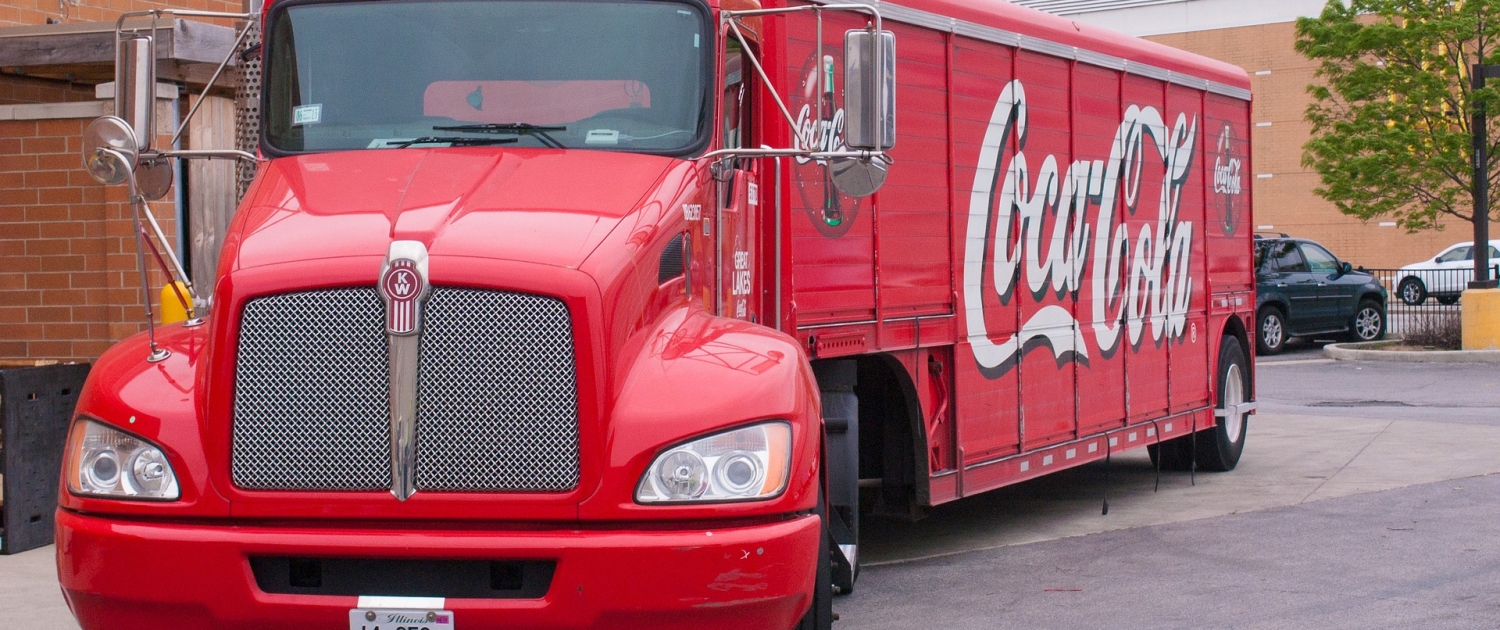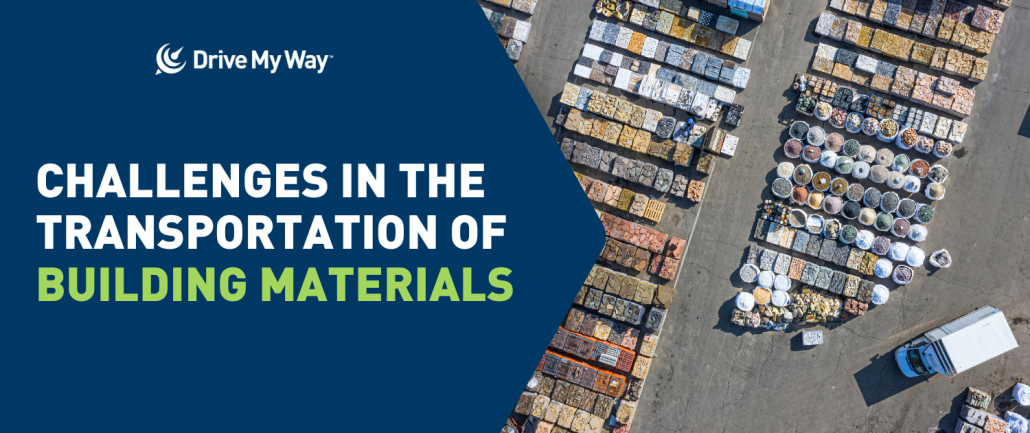
Transporting building materials is a critical component of the construction supply chain. From lumber and drywall to concrete, steel, and glass, these materials are essential, but their transportation presents a unique set of logistical challenges.
These products are often bulky, heavy, and sometimes fragile, requiring specialized handling and careful planning.
For any carrier or owner-operator that facilitates the transportation of building materials, understanding and addressing these challenges is key to ensuring safe, timely, and cost-effective delivery.
Bulky and Heavy Loads Require Specialized Equipment
One of the most immediate challenges in hauling building materials is their sheer size and weight. Oversized items like steel beams or precast concrete panels may exceed standard trailer dimensions or weight limits, requiring flatbeds, step decks, or even extendable trailers.
These loads may also need permits for oversized transport and escorts depending on their dimensions and routes.
What to do:
- Invest in a diverse fleet that includes flatbeds and heavy-haul trailers.
- Train dispatch and logistics teams on how to secure the necessary permits and route approvals. Make sure communication between dispatch, drivers, and management is streamlined, because miscommunication can lead to costly delays, missed permit requirements, or routing errors that may result in fines, delivery disruptions, or even load rejections at the job site.
- Ensure drivers are trained in load securement, especially for irregularly shaped cargo.
Fragility and Risk of Damage
While some building materials are heavy and durable, others, such as glass, tiles, or insulation, are fragile and require careful handling. The risk of damage increases during loading, unloading, or when traveling over rough terrain.
What to do:
- Use padding, secure strapping, and edge protection.
- Partner with shippers to establish clear handling protocols.
- Ensure all drivers and loading teams are trained in fragile material transport.
Weight Restrictions and Regulatory Compliance
Building materials often push the upper limits of weight restrictions. Federal and state laws strictly regulate gross vehicle weight, axle weight, and load distribution to prevent road damage and ensure safety.
Proactively calculating and verifying weight ahead of time helps avoid costly overweight fines, delays at weigh stations, or the need to reload shipments. Taking these steps early in the process keeps deliveries on schedule and helps maintain a company’s reputation for reliability and compliance.
What to do:
- Conduct detailed weight assessments before loading.
- Use weigh stations or onboard scales to prevent overweight violations.
- Stay up to date on state-by-state regulations, especially when crossing state lines.
Tight Delivery Schedules and Coordination with Construction Sites
Construction projects operate on strict timelines. Delivering too early can mean materials sit unused and exposed; too late, and projects get delayed. Additionally, many job sites have narrow access roads, limited unloading space, or require specific drop-off windows.
What to do:
- Implement advanced route planning and scheduling tools. Consider investing in new technologies to optimize your route planning process.
- Maintain strong communication with contractors and site managers.
- Use GPS tracking and ETA updates to ensure accurate arrival times. Be sure to update both drivers and contractors of any potential delays or changes in delivery time.
Adverse Road Conditions and Remote Locations
Many construction projects are in areas that are still being developed or are far from major transportation routes. These remote job sites often present serious challenges: unpaved or poorly maintained access roads, tight turns, low-clearance bridges, weight-restricted roads, or even no formal road access at all.
These conditions can lead to delays, increased vehicle wear and tear and even failed deliveries if not addressed properly in advance.
What to do:
- Equip trucks with durable tires and off-road capabilities when necessary. Some deliveries may require off-road-capable trucks, lighter vehicles for bridge compliance, or even equipment like forklifts or cranes to handle unloading due to a lack of paved surfaces or dock access.
- These locations often require slower driving speeds or alternate routes, so standard transit times may not apply. Build in time buffers to account for delays caused by terrain or road conditions without disrupting the delivery schedule.
- Coordinate in advance with site personnel to assess the best delivery paths and unloading areas. Drivers should then be briefed on specific challenges they might encounter en route and on-site.
Weather-Related Challenges
Rain, snow, wind, or extreme heat can all impact the transportation of building materials. All drivers should be trained and prepared for driving in adverse conditions year round, but those who transport building materials should be especially aware of the impact weather-related challenges can have.
Materials like lumber or drywall can be damaged by moisture, while icy or muddy roads can make access to already-challenging job sites more dangerous.
What to do:
- For moisture-sensitive materials like lumber, drywall, or insulation, use heavy-duty waterproof tarps rated for highway speeds and secure them tightly with bungee cords or ratchet straps to prevent flapping or tearing.
- For high-value or highly fragile materials, such as glass or engineered wood products, consider using enclosed trailers or curtain-side trailers to provide full protection from rain, snow, and road debris.
- Assign dispatch teams to use tools like the National Weather Service, Weather Underground, or transportation-specific apps like Drivewyze to track storms along planned routes. If a storm is forecasted to hit a delivery area, proactively reschedule with the job site or shift departure times to avoid peak weather events while still meeting project deadlines.
By understanding the unique logistics of building material transport, carriers can minimize risk, reduce delays, and build long-lasting relationships with contractors, suppliers, and builders.
Drive My Way addresses your unique challenges and secures skilled hires for your construction and building materials operations. Schedule a call today to learn more!


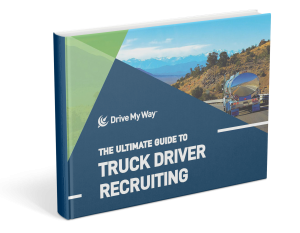



 Slowly but surely, companies are re-opening and finding a new normal. The widespread shutdowns due to COVID-19 will continue to ease, but the effects of the pandemic are likely to linger for far longer. With millions of Americans becoming remote workers overnight, virtual recruiting and onboarding have become the norm for many companies. Even as restrictions on in-person work environments are relaxed, prepare to manage your
Slowly but surely, companies are re-opening and finding a new normal. The widespread shutdowns due to COVID-19 will continue to ease, but the effects of the pandemic are likely to linger for far longer. With millions of Americans becoming remote workers overnight, virtual recruiting and onboarding have become the norm for many companies. Even as restrictions on in-person work environments are relaxed, prepare to manage your 
 If you’re dealing with high application abandonment, try putting yourself in a driver’s shoes. Most drivers don’t want to spend their limited free time filling out lengthy and complex applications. In fact, this is usually
If you’re dealing with high application abandonment, try putting yourself in a driver’s shoes. Most drivers don’t want to spend their limited free time filling out lengthy and complex applications. In fact, this is usually  Since drivers spend most of their time on the road, they mainly search for and apply to jobs using their smartphones. In this mobile-first world, recruiters and fleet managers need to make sure they’re able to communicate and interface with drivers this way. Otherwise, you risk a large number of drivers abandoning your application.
Since drivers spend most of their time on the road, they mainly search for and apply to jobs using their smartphones. In this mobile-first world, recruiters and fleet managers need to make sure they’re able to communicate and interface with drivers this way. Otherwise, you risk a large number of drivers abandoning your application. While you, as a recruiter can create what you think is the most efficient, painless, and all-around great application experience, you won’t really know how it is until drivers start applying. Even when they do start, it can be hard to gauge what’s working and what’s not since gathering data around job application abandonment can prove to be difficult.
While you, as a recruiter can create what you think is the most efficient, painless, and all-around great application experience, you won’t really know how it is until drivers start applying. Even when they do start, it can be hard to gauge what’s working and what’s not since gathering data around job application abandonment can prove to be difficult.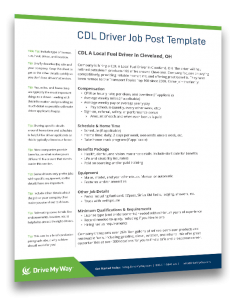


 When speaking with driver candidates, be sure you’re an expert on your company and the particulars of the job. Know what the day-to-day will look like and give honest answers. Don’t sugarcoat things if you know that your company might not have the world’s best benefits or if the pay might not be at the top of the scale.
When speaking with driver candidates, be sure you’re an expert on your company and the particulars of the job. Know what the day-to-day will look like and give honest answers. Don’t sugarcoat things if you know that your company might not have the world’s best benefits or if the pay might not be at the top of the scale.  This may sound obvious, but you’d be surprised how many recruiting departments lack a cohesive plan for how to bring drivers into their organization. While each hiring plan will vary from carrier to carrier, all of them should have two things in common. They should be measurable and repeatable.
This may sound obvious, but you’d be surprised how many recruiting departments lack a cohesive plan for how to bring drivers into their organization. While each hiring plan will vary from carrier to carrier, all of them should have two things in common. They should be measurable and repeatable. Comprehensive CDL Recruitment Solutions
Comprehensive CDL Recruitment Solutions
 Truck driver retention is a well-documented problem in the trucking industry. Carriers are finding it harder and harder to retain qualified drivers after they’ve joined their fleet. The problem is even worse in the
Truck driver retention is a well-documented problem in the trucking industry. Carriers are finding it harder and harder to retain qualified drivers after they’ve joined their fleet. The problem is even worse in the  If you’re experiencing a high turnover of new drivers, the most important thing to do is figure out why. And the best people to ask? The drivers who are leaving.
If you’re experiencing a high turnover of new drivers, the most important thing to do is figure out why. And the best people to ask? The drivers who are leaving. Everybody wants to feel appreciated at their job, and everybody likes to have tangible goals that they can work towards and achieve. This is the guiding principle behind having awards and incentive programs in the workplace.
Everybody wants to feel appreciated at their job, and everybody likes to have tangible goals that they can work towards and achieve. This is the guiding principle behind having awards and incentive programs in the workplace.  Upgrading the amenities for your fleet of trucks can be a costly venture for organizations. However, carriers should consider that the increased truck driver retention that comes from offering amenities might be worth the initial investment, especially if you have a lot of OTR/Regional drivers.
Upgrading the amenities for your fleet of trucks can be a costly venture for organizations. However, carriers should consider that the increased truck driver retention that comes from offering amenities might be worth the initial investment, especially if you have a lot of OTR/Regional drivers.  Not every driver is a fit for every carrier, and that’s ok. Recruiting isn’t about finding any driver for the position. It’s about finding the
Not every driver is a fit for every carrier, and that’s ok. Recruiting isn’t about finding any driver for the position. It’s about finding the 

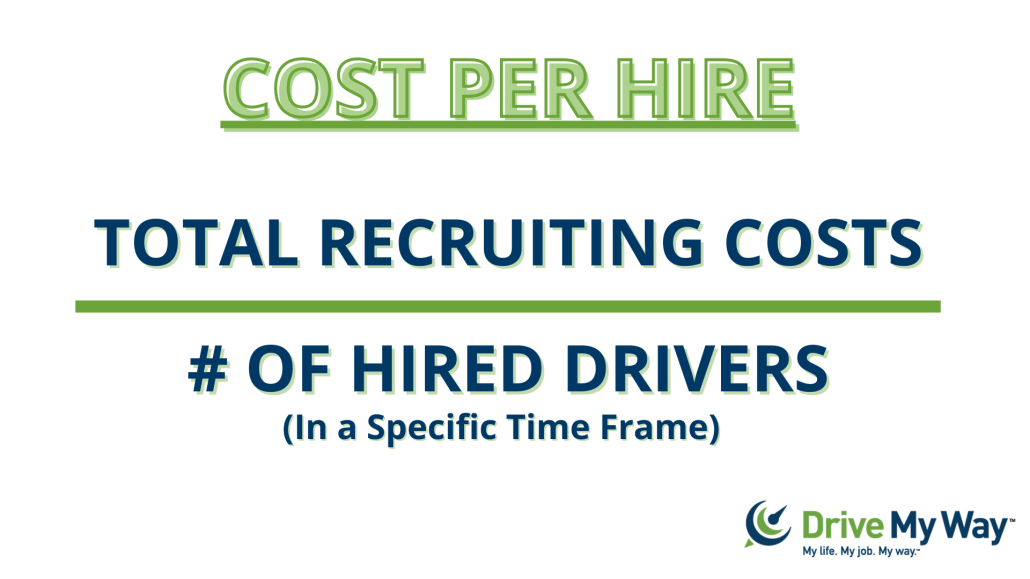
 For the better part of ten years, the trucking industry has been faced with what’s commonly been called a “truck driver shortage”. The thought is that there’s simply not enough drivers to fill the open positions that trucking companies have.
For the better part of ten years, the trucking industry has been faced with what’s commonly been called a “truck driver shortage”. The thought is that there’s simply not enough drivers to fill the open positions that trucking companies have. 
 A common misconception is that truck drivers, like a lot of other workers in our country, don’t want to work anymore and are exiting the industry. The fact is that there are many drivers who do want to work. They just have more options for where they can work and won’t hesitate to make a move if they find a carrier that’s offering better pay, a better work environment, and better home time
A common misconception is that truck drivers, like a lot of other workers in our country, don’t want to work anymore and are exiting the industry. The fact is that there are many drivers who do want to work. They just have more options for where they can work and won’t hesitate to make a move if they find a carrier that’s offering better pay, a better work environment, and better home time Since the problem isn’t a shortage of drivers, but a problem of retaining drivers, the solution is simple; make working conditions better for truck drivers. If you look at any data around truck driver happiness, you’ll see that there’s a laundry list of issues that frustrate drivers.
Since the problem isn’t a shortage of drivers, but a problem of retaining drivers, the solution is simple; make working conditions better for truck drivers. If you look at any data around truck driver happiness, you’ll see that there’s a laundry list of issues that frustrate drivers.  Recruiters should focus on what they can control. This includes
Recruiters should focus on what they can control. This includes  Referring to the problem that the trucking industry is facing as a shortage of truck drivers shifts the blame off of carriers and onto truck drivers. Instead of focusing on improving the conditions that drivers are faced with, (low pay, sparse home time, demanding deadlines) calling it a shortage simply writes off the issue as “truck drivers are too picky and don’t want to work.”
Referring to the problem that the trucking industry is facing as a shortage of truck drivers shifts the blame off of carriers and onto truck drivers. Instead of focusing on improving the conditions that drivers are faced with, (low pay, sparse home time, demanding deadlines) calling it a shortage simply writes off the issue as “truck drivers are too picky and don’t want to work.”